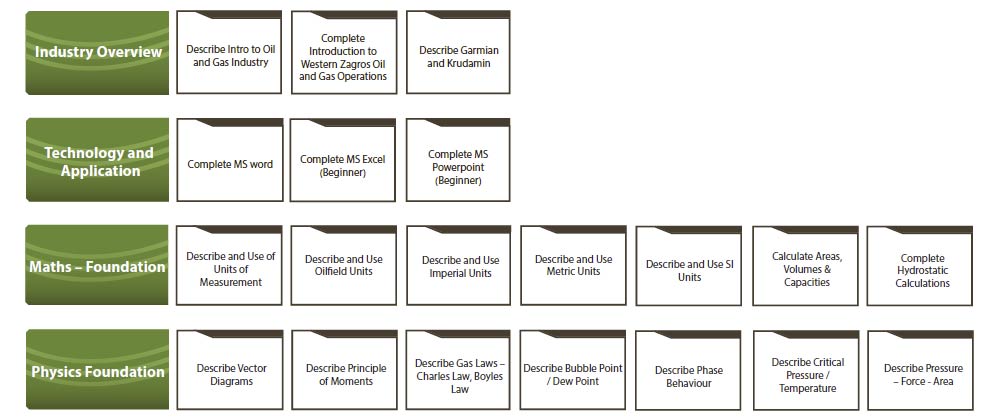Why You Absolutely Need Individualized Learning Paths
Jill W.
When I was younger, I often had to complete training that I already knew and often wondered, "Why am I wasting my time reviewing this stuff? I wish they would give me the training I need rather than lumping me in with everyone else!"
I'm sure that for many learners, similar thoughts still cross their minds. But, with the way that eLearning can be set up, learners can be treated as individuals rather than groups by individualizing learning paths. With the right LMS, learning can be tailored to specific learners. How can it be done?
In this article, we'll discuss why learning paths should be individualized, how to use a skills matrix and create individualized learning paths.
Why Learning Paths Should be Individualized
A person's learning path should consider the skills that person already has, the skills that person needs to do the job and the skills that person will require in the future to fulfill their career goals.
Each of us is an individual with different learning requirements.
For example, Andrea and Francois both work as call desk operators for an internet service provider. Andrea is fluent in both English and French, but, she often has difficulty taking a leadership role when asked. Francois was born and raised in Morocco and is fluent in French and Arabic, but has some difficulty with English - especially with the way Canadians speak it.
Andrea and Francois do the same job, but they each need to acquire different skills to be able to do that job and succeed at it. So, why would their learning paths be identical?
Learning paths should be individualized. So, how do you create individualized learning paths for your employees? You may need to take a step back and look at the overall skills that your organization needs. You may need a skills matrix.
The Skills Matrix
The skills matrix, also referred to as a skill profile, documents the areas of expertise that employees in each section of the organization and the skills they must possesses to work successfully in that area. The skills matrix provides an excellent first step in creating individualized learning paths.
Consider this example of some of the areas that a gas plant technician might need to be proficient in:

Skills matrix gas plant technician
The left-hand column are the areas of expertise in which the technician is expected to be proficient. The rows of folder icons represent the skills that person requires.
While everyone who does this job needs all of the skills listed, not everyone needs training in all of those skills.
How do you know who needs what training? There are a number of methods you can use including interviews, surveys, skill demonstration and allowing learners to challenge exams.
What is a Learning Path?
So, you've set up your learning content on your LMS and you're ready to assign training to your workforce. But, what does that look like? Here's an example of what a learning plan looks like in SkillBuilder® LMS:

Example of a Learning Plan in SkillBuilder LMS
While this is a rather limited example, you can see the resemblance to the skill matrix. In the left-hand column are the areas of expertise, sorted by the category titles in the narrow horizontal bands. The skills are the gold squares, similar to the folder icons used in the skill matrix. Let's take a closer look at one of these gold squares. Each of these gold squares represents a learning path. Let's take a closer look at one.

Example of a Learning Path in SkillBuilder LMS
A learning path is a sequence of learning activities that allow the learner to master skills and critical tasks and functions in small steps.
In the example above, the learner must complete several learning items (download a document, take an online course and complete an exam, watch a video) in order to earn his certificate. Some learning items are prerequisites, others are optional, included to give learners control over their own eLearning experience.
Why Individualize Learning Paths?
When you individualize learning paths, you are empowering your learners with a sense of involvement in answering their learning needs.
Individualized learning paths allow the learner to:
- Choose which learning activities they complete and when. This can be done by using a learning path map such as those SkillBuilder® LMS allows you to build.
- Be involved in creating learning goals. Once established, individualized learning paths can help learners move towards achieving these goals by breaking down the learning into small, easy-to-manage chunks.
- Become motivated to learn. A sense of ownership of learning helps to increase interest in the learning.
- Chart their own success. Learners can see what they've accomplished, the milestones they've completed and what they need to do next.
Creating Individualized Learning Paths
So, now that you're familiar with learning paths and how they work, you may be wondering, "How do I create individualized learning paths?" Here are some tips:
- Begin by reviewing the learner's needs.
- What does the learner need to know to do his or her job?
- Review the learner's training records.
- What has the learner already learned?
- Where did he or she achieve success?
- Where is additional training needed?
- Speak with the learner to discuss job goals and career objectives to discover additional training needs.
- Select the appropriate eLearning modules.
- Link related modules into one path.
- Assign stand-alone modules as required.
- Create as many learning paths as is required to suit the learner.
Now, consider this example: Staff at a warehouse are required to take OH&S training. There are 15 employees in the warehouse that require this training, but there are three that are forklift drivers and need forklift safety training. You don't want the other 12 to have to take this training. In addition, one of your forklift drivers needs to take a Transportation of Dangerous Goods (TDG) course.
This is where the ability to create individualized learning paths becomes essential in streamlining the management of your learners.
- In this case, you would create one learning path with the general OH&S courses and assign it to the 12 employees who are not forklift drivers.
- A second learning path that includes the OH&S materials and the forklift safety content would be assigned to two of the three forklift drivers.
- Finally, for the driver who needs the TDG course, a third learning path could be created containing all three elements.
Is my LMS up to the task?
What should your LMS be able to do for you to help you create individualized learning paths? Read 6 Tips to Use Course Variables to Create Personalized eLearning.
With the right LMS, you could create as many learning paths as you need - each one tailored to specific learner's requirements. You could track each individual learner's progress and learning achievements through the learning management system's reporting functions. The way that you manage learning for your organization is only limited by the functionality of your LMS!
Conclusion
In this article, we've walked through the process of identifying areas of expertise, profiling the skills necessary to be successful in those areas, creating learning paths and then individualizing those learning paths. What's next?
Examine the training content you already have. Find out if your LMS will let you take modules and arrange them in new configurations. As you design learning for your organization, consider what's been said and how you can create personalized learning that can be set up to suit specific learners.
Remember, learner engagement is all about getting and keeping the learner's attention. And what better way is there to do that than to offer learners learning paths that are designed them in mind.
📘 Ready to Elevate Your Learning Strategy?
Explore our comprehensive library of eBooks and tools on learning resource development, competency-based learning, and LMS implementation. Transform your training programs with insights from industry experts and practical templates.
Jill W.
Jill is an Instructional Designer at BaseCorp Learning Systems with more than 10 years of experience researching, writing and designing effective learning materials. She is fascinated by the English language and enjoys the challenge of adapting her work for different audiences. After work, Jill continues to leverage her professional experience as she works toward the development of a training program for her cats. So far, success has not been apparent.
